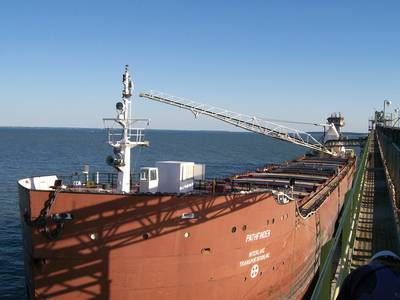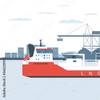Great Lakes: US Cargoes Surge on Milder Weather
With the vast ice fields of December 2013 a distant but still troubling memory, U.S.-flag cargo movement on the Great Lakes this past December rebounded significantly. Shipments totaled 9.6 million tons, an increase of nearly 35 percent compared to a year ago. Every commodity – iron ore, coal, limestone, cement, salt, sand and grain, registered increases ranging from 10 to 209 percent.
“The increases recorded this past December dramatically illustrate just how badly the early onset of ice in December 2013 slowed Great Lakes shipping,” said James H.I. Weakley, President of Lake Carriers’ Association. “This is why we have begun our effort to build another heavy icebreaker to partner with the U.S. Coast Guard’s MACKINAW. It would be foolhardy to imagine we won’t face daunting ice fields again. In fact, shipping has slowed considerably in January as a result of thick ice in Whitefish Bay, the upper St. Marys River, and more recently, the St. Clair River.”
For the year, U.S.-flag lakers carried 90.1 million tons of cargo, an increase of 1.1 percent over 2013. Iron ore cargos increased 4 percent to 46.5 million tons. Coal loadings dipped 2.6 percent and limestone shipments slipped 3 percent. Cement cargos rose by 3.7 percent. Salt’s 39-percent surge reflects that many communities exhausted their supplies battling the winter of 2013/2014. Sand cargos were essentially unchanged from 2013, but grain cargos decreased by 42 percent.
Weakley noted two factors helped the fleet carry slightly more cargo than in 2013: Higher water levels and the activation of three ships not scheduled to operate in 2014. Still, Weakley cautioned that neither option is guaranteed going forward. “Water levels fluctuate. The next decline could start sooner than anyone expects. And there are no more idle vessels that can be put into service quickly. The vessels that did not sail in 2014 require varying amounts of work before being commissioned. The best guarantee that the delays of December 2013 remain a painful memory is twinning the MACKINAW and assigning another 140-foot-long icebreaking tug to the Lakes. We also urge Canada to reassess its icebreaking resources stationed on the Lakes.”













